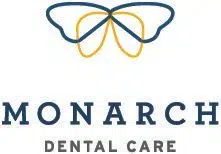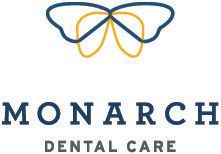
Gum disease is one of the most common oral health issues, yet it often goes unnoticed in its early stages. The initial symptoms may be subtle, but addressing them promptly can prevent serious complications down the road. From redness and swelling to more severe problems like tooth loss, understanding the warning signs is crucial. This guide will help you identify early signs of gum disease and explain why timely treatment is essential. By recognizing these symptoms, you can protect your oral health and avoid painful procedures later.
What is Gum Disease?
Periodontal disease, another name for gum disease, is a dental infection of the gums caused by bacteria that build up in plaque. Untreated cases may result in tooth loss, receding gums, and even harm to the bones.
The disease has two primary stages: gingivitis and periodontitis.
- Gingivitis: The mildest form, characterized by swollen gums and minor irritation.
- Periodontitis: The advanced stage, where the infection spreads deeper, affecting bone and supporting tissues.
Early Warning Signs of Gum Disease
Catching gum disease early is key to reversing the damage. Here are the early symptoms you should look out for:
1. Bleeding Gums
When you brush or floss your teeth, healthy gums shouldn’t bleed. Bleeding is one of the first indicators that something is wrong. While it might seem harmless, consistent bleeding is a sign of gingivitis, the initial stage of gum disease. If you notice blood, don’t ignore it—take action to prevent the condition from worsening.
2. Redness and Swelling
Another common early sign is gum inflammation. If your gums look redder than usual or feel swollen, this is often a response to bacteria buildup. Normal gums should be firm and pale pink, so any deviation from this could indicate gum disease. Professional dental examinations and routine cleaning can help to control this problem.
3. Receding Gums
Do your teeth seem longer than before? This might be a sign of receding gums, where the gum tissue pulls away from the teeth. As the gums move back, the roots of your teeth become exposed, increasing their susceptibility to decay and sensitivity. If you’re noticing this, it’s time to visit a dentist Prairie Village for an evaluation.
4. Persistent Bad Breath
Everyone has bad breath occasionally, but if it persists, it could be a sign of gum disease. Bacteria trapped under the gum line can produce a foul odor. Mouthwash and brushing alone won’t solve this issue because the bacteria causing it are deep within the gums. This symptom should never be overlooked as it signals infection.
5. Gum Tenderness or Pain
If you feel pain or if your gums are sensitive to the touch while chewing, this could be another warning sign. Tender gums are often inflamed due to infection, and they can become more sensitive as the disease progresses. Painful gums should prompt you to seek gum disease treatment before the condition worsens.
6. Pus Between the Teeth and Gums
Pus is a clear sign that an infection is present. If you notice any discharge between your teeth and gums, this is a serious issue that needs immediate attention. The presence of pus is typically associated with advanced gum disease, so urgent care is necessary to prevent further damage.
How to Prevent Gum Disease?
While these symptoms may sound alarming, the good news is that gum disease is preventable. By developing effective dental hygiene practices, you can considerably lower your chances of getting the illness.
Here are some preventive steps you can take:
- Brush Twice Daily: Brush your teeth and gums with a soft toothbrush and fluoride toothpaste to help get rid of plaque and bacteria.
- Floss Regularly: Flossing helps remove food particles and bacteria from between your teeth; this is the area where your toothbrush can’t reach.
- Use Antibacterial Mouthwash: Mouthwash can help kill bacteria that lead to gum infections.
- Visit Your Dentist Regularly: Routine cleanings and checkups allow your dentist Prairie Village to identify early signs of gum disease and take action before it worsens.
- Avoid Smoking: Smoking weakens your immune system and thus makes it harder to fight gum infections.
When to See a Dentist?
If you’re experiencing any of the symptoms mentioned, it’s crucial to consult a dental professional. Early treatment can reverse the effects of gingivitis and prevent periodontitis from developing. Left untreated, gum disease can often cause irreversible damage to your teeth and jawbone, leading to more intensive procedures like tooth extractions and surgeries. Seeking gum disease treatment Prairie Village early on can help maintain your overall oral health and avoid future complications.
In some cases, deep cleaning, also known as scaling and root planing, may be also required to remove bacteria and tartar buildup beneath the gum line. This procedure helps to restore gum health and prevent the progression of the disease. Your dentist can guide you through the best treatment options based on the severity of your condition.
Gum disease is a serious issue that often starts silently. By being aware of the early signs, such as bleeding, swelling, receding gums, and bad breath, you can take preventive measures before it turns into a major health concern. Prioritize regular dental visits, good oral hygiene, and a healthy lifestyle to reduce your risk. Don’t hesitate to consult a dentist if you notice any of these symptoms—early intervention is the key to long-term oral health.



